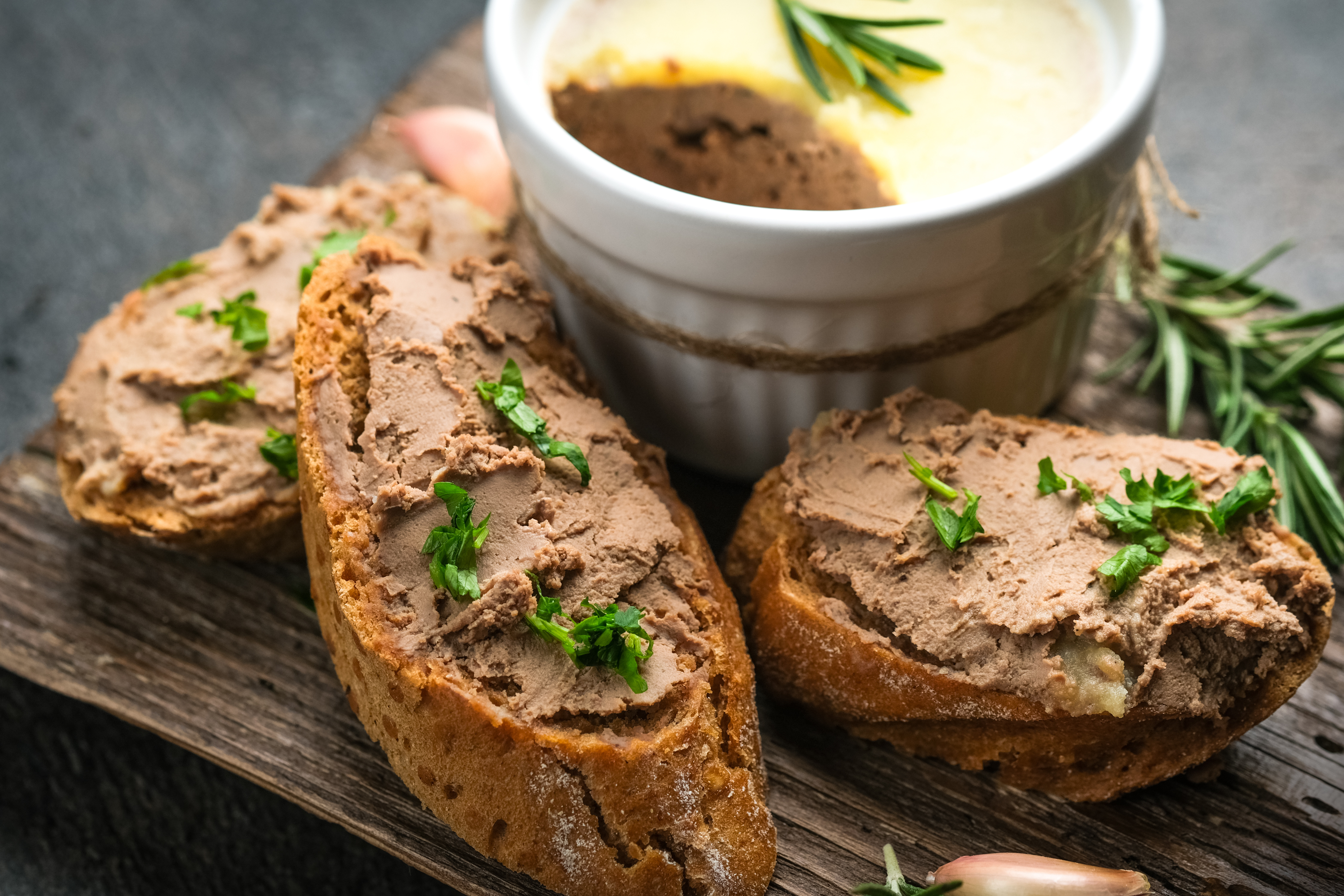Access to all articles, new health classes, discounts in our store, and more!
The Best Liver Pâté Ever

Background info: Liver and other organ meats are highly valued traditional foods that have been consumed for thousands of years and are still considered a priceless food source by many cultures across the globe. It wasn’t until medieval France, however, that liver was whipped into what would become a cherished prize of the culinary world, liver pâté.
Today, pasture-raised liver remains nature’s ultimate multivitamin, and, despite misinformation about the “dangers” of consuming liver, such as absorbing toxic compounds processed by the liver, this organ meat is helpful in supporting mental health due to high levels of vitamin A, which is required for producing “feel-good” chemicals such as dopamine.
—Price-Pottenger
● ● ●
What we love about this recipe is that it doesn’t taste much like liver at all. The mix of spices makes a wonderful blend that tastes somewhat Moroccan, but with a bit of a twist.
Preparation time: 15 minutes
Yield: 4 servings as a meal and up to 10 servings as an appetizer
Ingredients
- 1 Tbsp. ghee or butter
- ½ cup thinly sliced onion (if you’re going to pulse this in your food processor, don’t worry about the size of the onion slices)
- ½ cup Madeira
- ½ cup bone broth (neutral broth is preferred, but any red meat broth or stock will work; see note below)
- 1 Tbsp. ground rosemary
- 2 tsp. lemongrass
- 2 tsp. allspice
- 2 tsp. paprika
- 1 tsp.black pepper
- 1 tsp. sea salt
- 7 – 8 organic chicken livers
Directions
Add the ghee and onion to a medium saucepan and set the burner to low heat. Warm the onion for a minute or two.
Add the bone broth and Madeira. Turn the heat up to medium; simmer for 5-10 minutes, stirring occasionally, until the liquid reduces by half. Add the spices and sea salt, and continue to simmer for 2 minutes.
Add the chicken livers and simmer on low until they turn from red to brown; this will take 5-7 minutes. You can cut a liver in half to see if it’s still red inside. You can also use a meat thermometer, and when the interior is 165º F, it’s done.
Use an immersion blender to blend it up, or put it in your blender or food processor with the S-blade and pulse a few times until it’s the consistency you like.
Serving suggestions
Serve goulash-style and warm over roasted zucchini slices, the Best Brussels Sprouts, cooked collards, or a bed of shredded Romaine lettuce.
You can also serve this pâté-style with crudités.
Serve with raw cultured vegetables, such as sauerkraut or kimchi.
Note: Neutral broths are almost flavorless (or perhaps have a very mild flavor) and can be used in a variety of recipes without imposing a meat flavor on the dish. These broths are typically made with bones only and no meat (or very little meat, like oxtail), since the meat is where the flavor is. With neutral broths, you get the health benefits without actually tasting the broth in the recipe. Flavored broths are typically made with bones, meat scraps, vegetables, herbs, and spices; they’ll have some flavor from the meat, vegetables (such as onions and garlic), and spices. They can make really nice sipping broths or the basis of savory dishes but would not be appropriate for making desserts. For health purposes, we are following the Gut and Psychology Syndrome (GAPS) definition of stock (bones and possibly more meat, simmered from 1½ to 3 hours) and broth (mainly bones, simmered over 3 hours).
Reprinted with permission from The Bone Broth Secret by Louise Hay and Heather Dane (Hay House, 2016); available from Amazon, BN.com, and HayHouse.com.
Become a member and check out other Louise Hay and Heather Dane Recipes:
Easy Turkey Meatloaf Cupcakes with Kabocha Squash Topping
Published in the Price-Pottenger Journal of Health & Healing
Winter 2015 – 2016 | Volume 39, Number 4
Copyright © 2015 Price-Pottenger Nutrition Foundation, Inc.®
All Rights Reserved Worldwide





